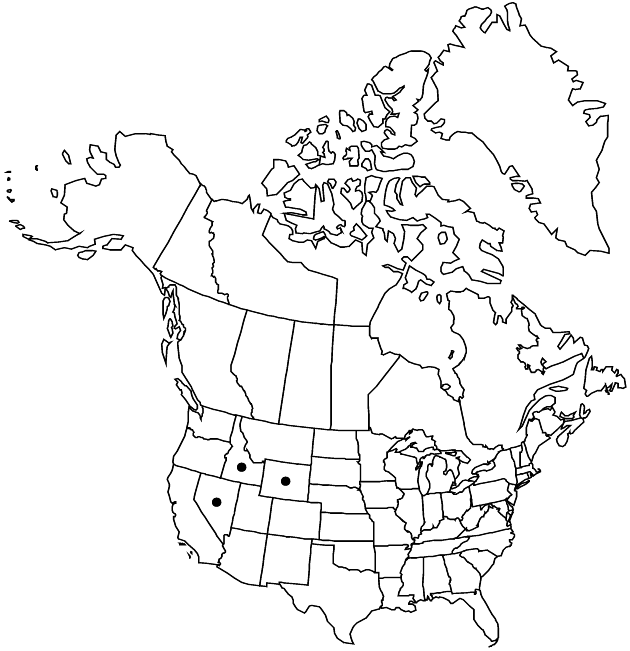Antennaria arcuata
Leafl. W. Bot. 6: 41. 1950.
Dioecious. Plants 5–15 (–20) cm (stems woolly). Stolons 4–10 cm (arched). Basal leaves 1–3-nerved, narrowly to broadly spatulate, or narrowly rhombic-obovate, 20–45 × 3–15 mm, tips mucronate, faces densely white-woolly. Cauline leaves linear, (2–) 5–40 mm, not flagged. Heads (4–) 7–25, in racemiform to paniculiform or corymbiform arrays. Involucres: staminate 3–5 mm; pistillate 4.5–6 (–7) mm. Phyllaries distally whitish (mostly staminate) or grayish stramineous to light-brown. Corollas: staminate 2.5–4 mm; pistillate 3.5–5 mm. Cypselae 1–1.8 mm, glabrous; pappi: staminate 3–4.5 mm; pistillate 4–6 mm. 2n = 28.
Phenology: Flowering summer.
Habitat: Moist alkaline basins in sagebrush steppe
Elevation: 1500–2300 m
Distribution

Idaho, Nev., Wyo.
Discussion
Antennaria arcuata is known from three widely disjunct areas in Blaine County, Idaho; Elko County, Nevada; and Fremont County, Wyoming (R. J. Bayer 1992). It is characterized by arching stolons and white-woolly indument (Bayer) and is not easily confused with other species of Antennaria.
Selected References
None.